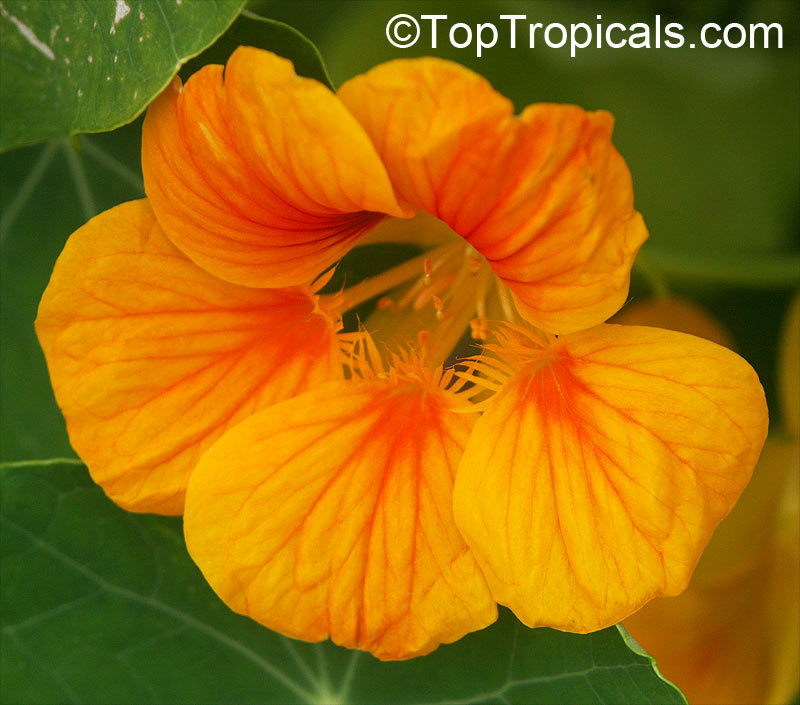Tropaeolum majus (Garden Nasturtium)
Top Tropicals Plant Encyclopedia
Botanical name: Tropaeolum majus
Common names: Garden Nasturtium, Indian Cress, Monks Cress
Family: Tropaeolaceae
Origin: South America
Hardiness: 0°F














Tropaeolum majus (garden nasturtium) is a fast-growing herbaceous annual native to the Andes from Bolivia north to Colombia. Cultivated varieties have hybrid origin, with possible parent species including T. minus, T. moritzianum, T. peltophorum, and T. peregrinum. Plants form trailing or compact mounds, with rounded, shield-shaped leaves attached at the center. The showy flowers, in shades of yellow, orange, and red, appear over a long season and are both ornamental and edible. Leaves and flowers have a peppery flavor and are commonly used fresh in salads and as colorful garnishes. Seeds can be pickled as a caper substitute.
Grow nasturtiums in full sun with moist, well-drained soil. Compact forms stay around 12 in tall and make colorful borders, while trailing types can reach several feet and are suited to hanging baskets, window boxes, or ground cover. The plants are low-maintenance, tolerate poor soils, and may self-seed in mild climates. Hardy as an annual in most regions; perennial in frost-free areas.



























